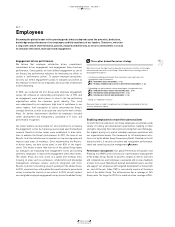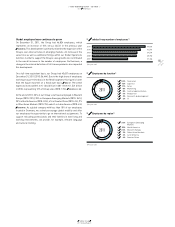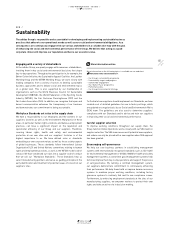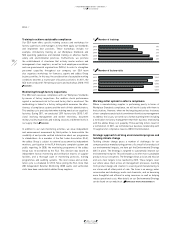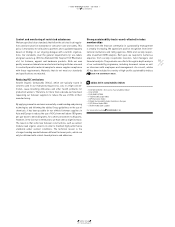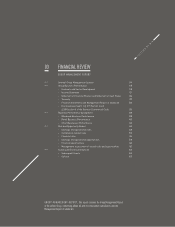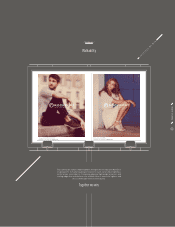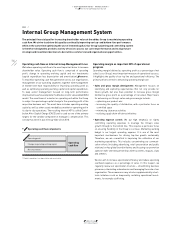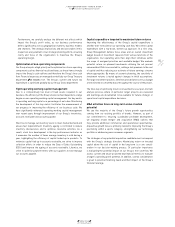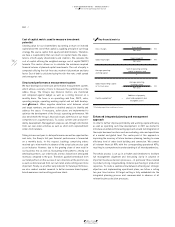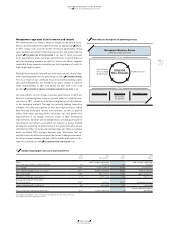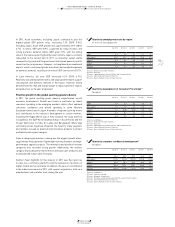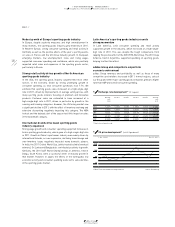Reebok 2011 Annual Report Download - page 114
Download and view the complete annual report
Please find page 114 of the 2011 Reebok annual report below. You can navigate through the pages in the report by either clicking on the pages listed below, or by using the keyword search tool below to find specific information within the annual report.
adidas Group
2011 Annual Report
GROUP MANAGEMENT REPORT – OUR GROUP
110
2011
02.8 Sustainability
02.8
Global sports events, such as the FIFA World Cup or the Olympic Games, place considerable attention on the host countries, the event
organisers and their major partners. This increased attention also raises questions about how events are organised and how the involved
parties manage their wider social and environmental responsibilities.
The London Organising Committee of the Olympic and Paralympic Games (LOCOG) issued a Sustainable Sourcing Code to its partners. The
code clearly outlines four key principles for commercial partners to follow:
– Responsible sourcing – ensuring that products and services are sourced and produced under a set of internationally acceptable environ-
mental, social and ethical guidelines and standards
– Sustainable product creation – maximising the use of materials with reused and recycled content, minimising packaging and designing
products that can either be reused or recycled
– Minimising embodied impacts – maximising resource and energy efficiency in the manufacturing and supply process in order to minimise
environmental impacts
– Usage of healthy materials – ensuring that appropriate substances and materials are used in order to protect human health and the
environment
Commercial partners are contractually bound to abide by LOCOG’s policies and requirements. This includes the disclosure of all factories
manufacturing London 2012 products and registering those factory premises on the Supplier Ethical Data Exchange (SEDEX).
Case study on the London 2012 Olympic Games
Responsible sourcing practices
All direct suppliers and sewing subcontractors selected to
manufacture LOCOG licensed products
– are required to meet the adidas Group’s Workplace Standards
– are fully disclosed in SEDEX
– are subject to regular labour, health and safety compliance
inspections by adidas Group SEA compliance staff
– meet a defined Key Performance Indicator (KPI) rating for
factories’ compliance performance
– have a management plan in place that details the factory’s
compliance programme and future targets
– are publicly disclosed on the adidas Group website
Sustainable product creation
90% of the adidas products for the London 2012 Olympic Games
contain sustainable content, with 100% of athlete Village wear,
100% of Volunteer wear and 73% of on-field performance products
designed and developed as “Better Place”. The London Volunteers’
uniform is a prime example. All items in the Volunteer package
contain, at a minimum, 35% sustainable content, with three
How adidas is prepared to meet the code:
quarters of the Volunteer clothing and accessories at sustainability
levels beyond 50%. Additionally, all Volunteers will be wearing the
London version of the popular Fluid Trainer shoe. The Fluid Trainer
is technically advanced in the area of sustainability, with pattern
innovations and sustainable content that impact the whole shoe.
This shoe contains recycled polyester mesh, recycled EVA, as well
as recycled rubber, and has achieved a 70% or greater pattern
efficiency for every piece of the upper.
Minimising embodied impact
All direct suppliers selected to manufacture adidas branded
LOCOG licensed products and their major materials suppliers
undergo in-depth environmental assessments. These are used for
the development of individual factory improvement programmes.
The factories’ progress is going to be tracked regularly.
Usage of healthy materials
LOCOG licensed products comply with the adidas Group’s restricted
substances list and are in compliance with standards listed in the
LOCOG Sourcing Code.



